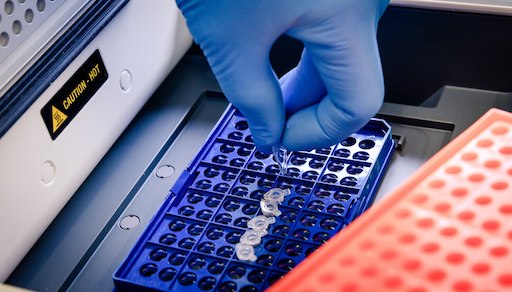Chromatography is a powerful analytical technique used to separate and identify components of a mixture. It is used in various fields including chemistry, biochemistry, pharmaceuticals, environmental sciences, and forensic sciences. The technique is based on the principle of differential migration of the components of a mixture through a stationary phase and a mobile phase.
The stationary phase is a solid or liquid material that is immobilised inside a column or on a surface. The mobile phase is a liquid or gas that flows through the stationary phase, carrying the components of the mixture along with it. As the mobile phase moves through the column, the components of the mixture interact with the stationary phase to varying degrees, resulting in their differential retention and separation.
Chromatography is a versatile technique that can be adapted to different types of samples, from small molecules to large biomolecules. The choice of stationary phase and mobile phase depends on the properties of the sample and the desired separation mechanism. In addition to the four main types of chromatography mentioned below, there are many other variations and combinations of these techniques, such as affinity chromatography, hydrophobic interaction chromatography, and reversed-phase chromatography.
Different Types
Gas Chromatography (GC) is a type of chromatography that is used to separate volatile organic compounds (VOCs) and other gaseous samples. The mobile phase is a gas, such as helium or nitrogen, and the stationary phase is a thin layer of liquid or solid material coated onto a column. As the sample is injected into the column, it is vaporised and carried along with the mobile phase. The components of the sample are separated based on their boiling points, polarity, and other physical properties. Gas chromatography equipment(link) can be complex, but it is an essential tool for many industries, including pharmaceuticals, food and beverage, and environmental science
Liquid Chromatography (LC) is a type of chromatography that is used to separate non-volatile organic compounds, peptides, proteins, and other biomolecules. The mobile phase is a liquid, such as water or an organic solvent, and the stationary phase is a solid material, such as silica or a polymer. The components of the sample are separated based on their solubility, charge, polarity, and other chemical properties. Liquid chromatography equipment includes a pump for delivering the mobile phase, a sample injector, a column for separating the sample components, and a detector for monitoring the eluent.
Ion Exchange Chromatography (IEC) is a widely used technique that separates charged molecules based on their charge properties. The equipment used in IEC typically consists of a column packed with a stationary phase that contains charged groups, such as cationic or anionic resins, that selectively interact with the charged components of the sample, allowing for the separation of amino acids, proteins, nucleic acids, and other charged molecules. The separation is achieved by the differential retention of the components by the stationary phase depending on their charge, size, and other properties.
Size exclusion chromatography (SEC) is a type of chromatography that is used to separate molecules based on their size. The stationary phase contains porous beads that act as a molecular sieve, allowing smaller molecules to enter the pores and larger molecules to pass through the column more quickly. This technique is commonly used to separate polymers, proteins, and other macromolecules. SEC equipment typically includes a column, a pump, and a detector to monitor the eluent as it exits the column.
Chromatography is a valuable tool for the analysis of complex mixtures, such as biological samples and environmental samples. It can be used to identify unknown compounds, quantify the amount of a specific compound, and purify a target compound for further analysis. However, chromatography is not a perfect technique, and several factors can affect the accuracy and precision of the results. These include the quality of the stationary phase and mobile phase, the temperature and pressure of the system, and the detection method used to detect the separated components.
In conclusion, chromatography is a versatile and powerful analytical technique that is widely used in various fields of science. By understanding chromatography principles and the different techniques available, researchers can optimise their analytical methods and obtain accurate and reliable results.
If you’re looking for high-quality chromatography products, Techmate’s has got you covered! Browse our selection of products on our website. Whether you’re a beginner or an expert, our team of professionals is always ready to assist you in finding the right products for your needs. Contact our team for assistance and get started on your next project with confidence!


